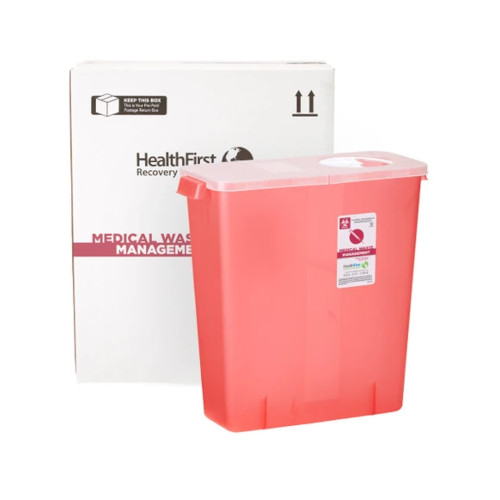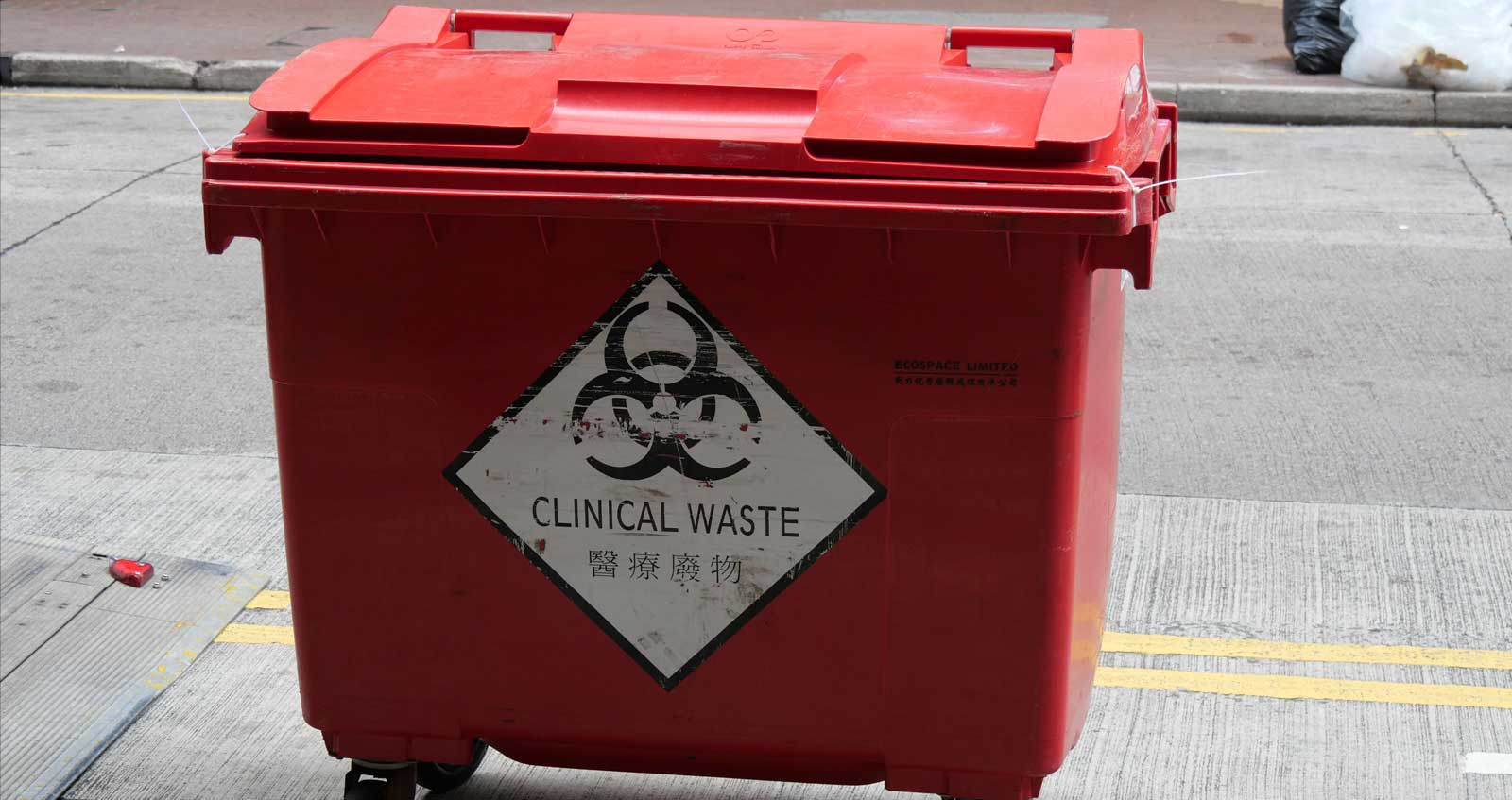Benefit at Your Doorstep: Situating Reliable Medical Waste Removal Near Me
Understanding the Various Kinds Of Garbage Disposal Methods
In the world of waste monitoring, the range of disposal methods available today is large and differed, each approach serving a distinct function in resolving the challenge of waste disposal. click here. From reusing approaches that aim to give new life to products, to the detailed procedures of dangerous waste administration, the landscape of garbage disposal is intricate yet crucial for environmental sustainability. Comprehending the subtleties of these various strategies not just clarifies the importance of responsible waste administration however likewise triggers us to reconsider our approach in the direction of waste disposal in a quickly progressing globe
Recycling Techniques
Recycling approaches are vital for sustainable waste administration practices in both residential and commercial setups. medical waste removal service. By implementing reliable recycling techniques, a significant quantity of waste can be diverted from garbage dumps, conserving natural deposits and minimizing the environmental influence of production procedures
In domestic locations, curbside recycling programs play an important duty in encouraging houses to separate recyclable products from general waste. Materials such as paper, plastics, glass, and steels can be sorted and gathered for processing into brand-new products, minimizing the need for raw products and energy-intensive production processes.
Industrial centers also depend on reusing methods to decrease waste generation and promote a round economy. By executing closed-loop systems, organizations can reuse materials within their manufacturing procedures, decreasing prices and ecological footprint. medical waste removal near me. Additionally, industrial recycling programs commonly involve partnerships with specialized recycling centers to ensure that materials are effectively sorted, processed, and rehabilitated into the supply chain
Composting Methods

Aerated static heap composting includes blending natural waste products in a big stack and routinely turning it to make sure appropriate aeration. This technique is efficient for massive composting operations. On the other hand, vermicomposting makes use of earthworms to break down organic matter into nutrient-rich spreadings. This technique is well-suited for smaller-scale procedures and households.
In-vessel composting involves positioning organic waste in a shut container with regulated problems for temperature and aeration. Windrow composting includes developing long rows of natural waste and routinely turning them to advertise disintegration - medical waste disposal.
Garbage Dump Disposal
Landfill disposal is a generally utilized technique for taking care of waste that can not be recycled or composted. It includes hiding waste in designated locations of land, with correct safety measures to protect against environmental contamination. Garbage dumps are crafted facilities developed to separate waste from the surrounding atmosphere. The waste is compacted and covered with soil everyday to reduce odors, hinder pests, and decrease the spread of litter. Modern garbage dumps are outfitted with protective liners and checking systems to stop leakage of unsafe substances into the soil and groundwater. Methane gas, a by-product of decaying natural waste in land fills, is frequently gathered and utilized as a resource of eco-friendly power. Regardless of advancements in landfill technology, issues stay regarding the long-lasting ecological effects, such as groundwater contamination and greenhouse gas discharges. Initiatives to minimize reliance on garbage dumps include promoting waste reduction, recycling, and exploring alternative waste disposal methods to minimize the ecological footprint associated with traditional land fill disposal techniques.

Waste-to-Energy Incineration
Incineration of waste for power generation is a method progressively being considered as an option to typical landfill disposal techniques. Waste-to-energy incineration includes the combustion of waste products at heats, usually in specialized centers designed to produce power or heat through the procedure - click here. This strategy not only minimizes the quantity of waste that would or else be predestined for landfills however additionally utilizes the warm generated during incineration to produce power
Among the key advantages of waste-to-energy incineration is its capacity to generate electrical energy while decreasing the environmental effect contrasted to standard landfill disposal methods. By converting waste right into power, this strategy helps in minimizing greenhouse gas emissions and dependence on nonrenewable fuel sources for energy generation. In addition, waste-to-energy facilities are equipped with advanced air contamination control modern technologies to minimize possible ecological toxins launched during the combustion process.
Hazardous Waste Administration

Considering the crucial significance of responsible waste management techniques, specifically in the world of environmental sustainability, the focus currently changes in the direction of the elaborate domain of Contaminated materials Monitoring. Contaminated materials presents significant risks to both human wellness and the atmosphere, requiring specialized handling and disposal strategies. Usual examples of contaminated materials consist of chemicals, batteries, pesticides, and electronic waste.
Contaminated materials Monitoring involves the recognition, collection, transportation, treatment, and disposal of products considered hazardous or possibly hazardous. This process calls for adherence to stringent policies and standards to reduce adverse influence on communities and public health. Different methods are used in managing unsafe waste, including recycling, safe and secure landfills, encapsulation, and chemical therapy.
Proper Contaminated Materials Management is critical for avoiding contamination of dirt, water sources, and air contamination. It is vital for sectors, labs, medical care facilities, and various other generators of contaminated materials to carry out durable administration approaches, training programs, and emergency action plans to guarantee the secure handling and disposal of these materials. Failure to handle unsafe waste appropriately can have far-ranging consequences, underscoring the value of attentive and accountable practices in this field.
Final Thought
In verdict, garbage disposal techniques play a vital duty in handling and reducing the effect of waste on the atmosphere. From reusing and composting to land fill disposal and waste-to-energy incineration, each approach has its very own advantages and limitations. Proper management of contaminated materials is likewise necessary to secure public wellness and the setting. It is vital for sectors and people to recognize the various garbage disposal methods offered and choose the most appropriate method for sustainable waste management.
In the world of waste administration, the range of disposal techniques readily available today is huge and varied, each method offering an unique purpose in addressing the obstacle of waste disposal. click here. From reusing approaches that intend to give new life to products, to the complex processes of hazardous waste monitoring, the landscape of waste disposal is complicated yet important for environmental sustainability. Understanding the subtleties of these different strategies not just sheds light on the importance of liable waste administration but additionally triggers us to rethink our strategy towards waste disposal in a swiftly progressing world
Initiatives to decrease reliance on garbage dumps include advertising waste reduction, reusing, and exploring different waste disposal techniques to decrease the environmental impact connected with traditional garbage dump disposal practices.
It is essential for markets and reference individuals to understand the various waste disposal methods available and select the most appropriate approach for sustainable waste monitoring.